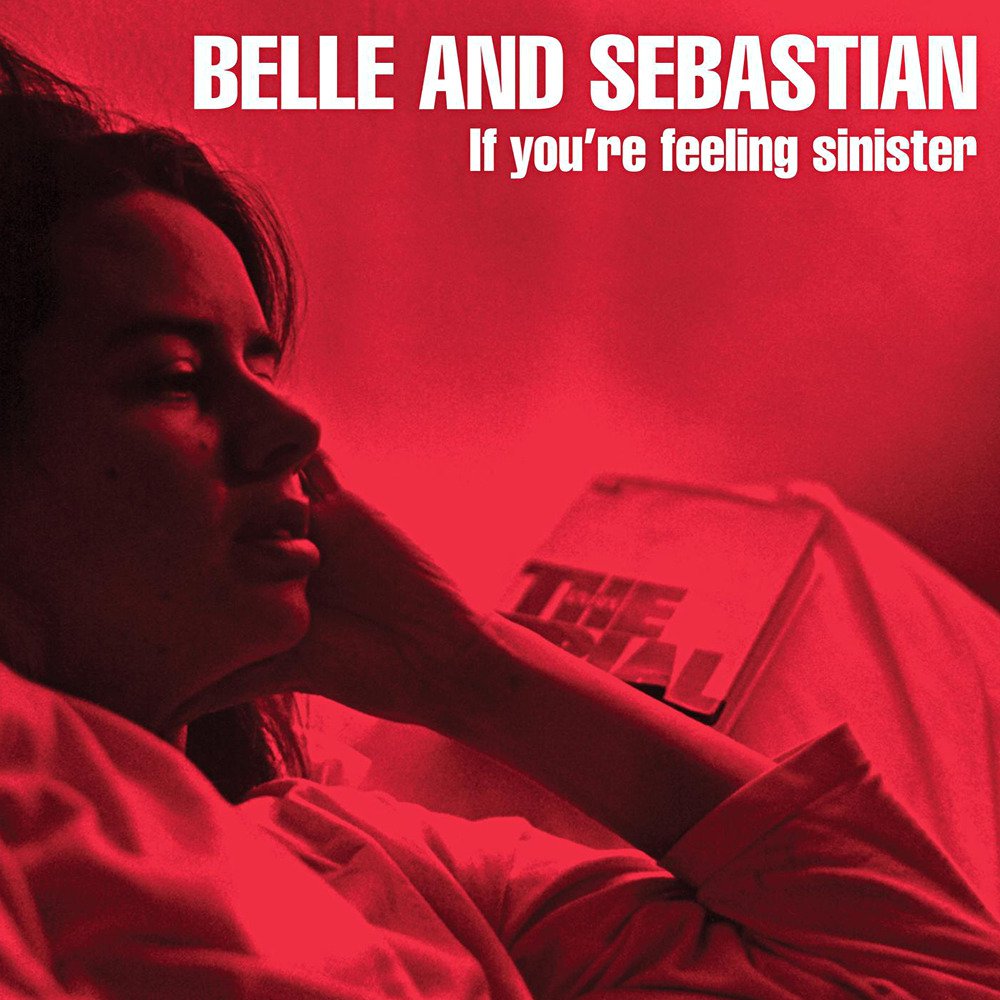Today, it would seem like a transparent marketing stunt. Belle And Sebastian were a group of bookish Scottish kids, playing stunningly pretty songs that happened to be radically out of step with everything happening in music at the time. They didn't play live. They didn't do interviews. They didn't let anyone take their pictures. Nobody really knew anything about them; people assumed that Isobel Campbell was Belle and that Stuart Murdoch was Sebastian. If anything like that happened now, it would come off as a strategy, and maybe an effective one. The Weeknd started off doing a variation on this act, and he ended up becoming one of the biggest pop stars in the world. If anything like that happened right now, your bullshit detectors would be going off like car alarms after an earthquake. But the world was different in 1996, and Belle And Sebastian's reticence didn't come off like an act -- mostly because it wasn't an act.
At this point, you probably already know the backstory. Stuart Murdoch spends his early-to-mid-20s suffering from chronic fatigue syndrome, taking in the world as an outsider because he never has the physical stamina to go out and experience it himself. He fills notebook after notebook with lyrics and song ideas. Eventually, he gets better, and as sort of a class project, he gets together with a bunch of other students and records Tigermilk. It's a stunning record, and only 1,000 copies are pressed. But that's enough to attract the interest of the brand-new London indie Jeepster, a label that had been formed just a year earlier. And so, a few months after Tigermilk, Murdoch and his thrown-together group return to the studio and emerge, a few days later, with a close-to-perfect album.
Of course, if you actually heard If You're Feeling Sinister within the first few years of its release, there is basically no chance that you knew any of that origin story. Belle And Sebastian self-consciously kept themselves hidden, building up a Smiths-esque mythos through things like the shadowy, classically composed photos that they used for album art, or like the floridly cryptic short stories that appeared in their liner notes. Their actual human selves remained a complete mystery. And while I suppose you could've learned about the band through the rock press, or even through Napster once that became a thing, it was much more likely that you found out about them directly, through word-of-mouth.
I'm pretty sure I'd read about Belle And Sebastian in SPIN before I actually heard Sinister, but all that did was convince me that this new band was irredeemably lame and that rock critics were irredeemably lame for liking them. (Rock critics, I'd learn after I became one, are irredeemably lame, but not because we like Belle And Sebastian.) The idea of a band who made carefully orchestrated folk-pop, who sounded like a '90s-wallflower version of Simon And Garfunkel, was about the least enticing thing I could've imagined in high school. At that time, just about every form of music that was popular -- whether in the UK or in America, whether mainstream or underground -- was defined, at least in part, by its aggression. Belle And Sebastian, by contrast, were defined by their utter and complete lack of aggression. That's a huge part of what made them special, but you actually had to hear them to understand that they were special -- and when the internet was in its infancy, when most of us were still on dial-up, hearing them wasn't so easy.
I didn't hear Sinister until it had been out for a year and a half. (Neither did most Americans; the album didn't get an American release until February 1998.) My initiation came from the girl I spent a few months dating during the summer after I finished high school. This particular girl seemed just impossibly sophisticated to me because she'd never had a Warped Tour phase and because she loved things like Morrissey and the Cure. I don't remember what we'd been doing when she put on Sinister, but I remember the granular details of the scene with absolute clarity: her mom's tiny kitchen, the one room in the house that had a CD player, with light slanting in through the shades and her cat asleep on the table. I remember being absolutely stunned -- that something as purely pretty as that could exist in a '90s-underground context, that it could whisper sweet awkward-kid encouragement in your ear rather than, like, sell nostalgic box sets to your parents in infomercials.
Stuart Murdoch has spoken about how simple and unsophisticated the songs on Sinister are -- how they're all three-chord songs, not complex arrangements, and how he'd pile on all these instruments only because he had so many people in the band and they all wanted to try out different things. And the simplicity -- the strummy guitars, Murdoch's reedy and conversational tone, the gentle propulsion at work in even the quietest songs -- is certainly key to their appeal. But Murdoch also had an amazing and innate sense of how to put a stunningly gorgeous song -- where the flutes and violins and harmonicas and pianos should show up, how to slowly fill these arrangements out without compromising their endearing fragility. There was familiarity in all of this; we had, after all, heard our parents' folk-pop records, where sounds like this were commonplace. But we hadn't heard them put to work to express the sort of shy, alienated warmth that Murdoch got across better than any of his peers ever could.
Murdoch was writing about stammering pauses and distant conversational murmurs and emotionally confusing makeout sessions and fleeting infatuations in ways that drew up a picture of a whole world -- one that sounded enormously appealing, especially when you had no real frame of reference for it. He found glamor in coyness in ways that only Morrissey had really ever discovered. "Think of it this way: You could either be successful or be us," he sang, and he made a lack of success sound like the best possible way to live. For some of us, this felt important -- a state to which we could aspire.
It might've been too influential. Before Sinister, a typical American underground rock band would've been someone like Unsane or the Jesus Lizard or Boss Hog -- bands who had come from punk and hardcore, who made gnarled and ugly and physically imposing forms of riff-driven noise. Even the quieter forces on the underground, people like Elliott Smith, were still expected to make something heavy. Belle And Sebastian weren't heavy. They were gloriously light. It took a long time for their influence to spread; it needed years to fully sink into the bloodstream of the indie rock world. But within, say, five years, people like Death Cab For Cutie had taken the band's timidity, Americanized it, and turned it into something that resonated with American college kids. A few years after that, the biggest stars in indie rock were sensitive and proudly bookish souls like Sufjan Stevens and the Decemberists -- a development that I don't think would've happened if not for Belle And Sebastian's influence.
I came to miss the scraggly, scary severity of '90s noise-rock once it was gone; the lush and orchestrated indie-pop that followed never captured my imagination the same way. But none of that takes away from the crystalline beauty of Sinister, or from the way I felt in that kitchen, the first time I heard it. That moment, and that album, will always be with me. And maybe your version of it will always be with you.






